
Matsumoto Castle Ice Sculpture Festival 2026
Kim BergströmThe Matsumoto Castle Ice Sculpture Festival has been running for over 30 years now, with a variety of skillfully designed works on display from several competing teams.

Also known as "Crow's Castle" because of its unusual black exterior, Matsumoto Castle is one of the three most beautiful castles in Japan, along with Himeji and Kumamoto.
The wooden interior of Matsumoto Castle offers an authentic experience that is different from what you get in many other castles rebuilt from reinforced concrete. The castle's most interesting features include steep wooden stairs, openings for archers, and an observation deck on the sixth floor of the main tower with great views of the surrounding city.
In spring, Matsumoto Castle is a popular spot for the cherry blossom. Many visit the extensive castle grounds and the park for a walk. Hundreds of cherry trees stand along the outer moat and are in full bloom in mid-April each year.
There are two magnificent black-colored gates leading to the castle. Black was considered the best color at the time and lended itself to a formal image. The Ichi no Mon, or outer gate, would lead people to the palace. Among its eaves, visitors can see the family crests of successive lords of the castle. The Ninomon, or inner gate, is located after crossing the inner moat. One of its interesting features are the small windows where matchlock pistols may be fired from.
The ruins of the Honmaru palace are marked by roof tiles in the Honmaru Garden. In the past, the castle consisted of 5 main buildings that were divided into about 60 rooms. In 1726, a fire destroyed Honmaru Goten and the lord at the time never rebuilt the palace, instead electing to move the palace affairs to Ninomaru Palace.
The Ninomaru Palace is thought to have been built following the completion of the Keep, around 1594. In the Meiji Period, the Ninomaru Palace was used as Chikuma Prefectural Office, but a fire occurred on June 19, 1867, and the entire building was burned down. In 1979, a research excavation began and the Ninomaru Palace ruins were restored and now they are open for public viewing.
It’s a 15-minute walk from Matsumoto Station. There is a bus available for 200 yen.

The Matsumoto Castle Ice Sculpture Festival has been running for over 30 years now, with a variety of skillfully designed works on display from several competing teams.

Also known as the 'Crow Castle' for its black stony exteriors, Matsumoto castle is iconic in being one of the only 4 castles to be designated as National Treasures.

I believe Matsumoto Castle should be on everyone's Japan itinerary. It is one of the four castles designated as National Treasures of Japan.

In Japan's northerly Nagano prefecture, Matsumoto Castle is a national treasure of Japan.

Magnificent Matsumoto Castle is one of Japan's 12 remaining original castles, dating back to the 16th century.
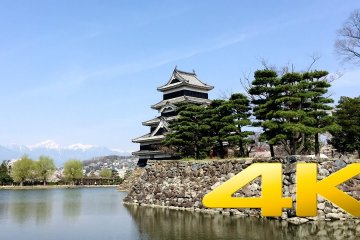
Highly recommended all year long, Matsumoto Castle is one of these marvels of Japan that everybody needs to visit once in their lifetime.
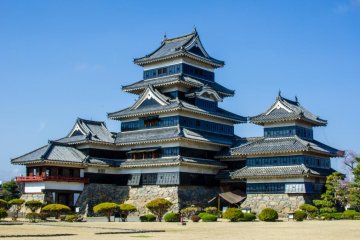
Matsumoto Castle in Nagano Prefecture is not only one of Japan's most ancient castles, it is also one of the most beautiful.
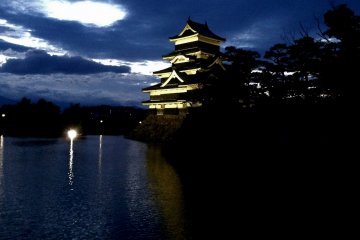
The area around Matsumoto castle has a very traditional atmosphere, and is a pleasant place for a stroll.
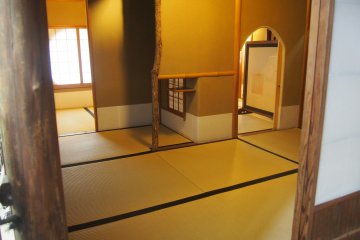
The Matsumoto Castle tea ceremony is being held on August 6th and 7th. Ikegami Hyakuchikutei, a historical Japanese house with gardens, is just a few minutes walk from the castle. The fall foliage of the garden is especially beautiful in the fall.
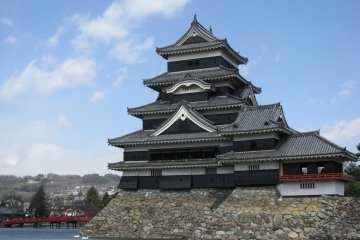
Matsumoto Castle is one of Japan's five original standing castles. Its wood interior, darkened by time, is severe and functional. The castle's location on a spacious plain offers good views of the surroundings.
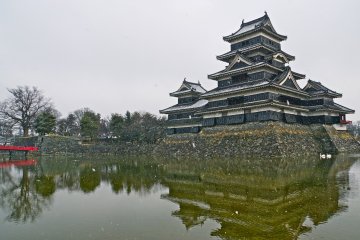
Matsumoto Castle in Winter. Snowfall at the castle in mid-February and a quick tour inside!
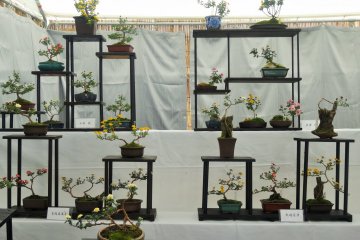
If you're visiting Matsumoto Castle this autumn, be sure to check out the display of bonsai chrysanthemums on the north side of the castle grounds.

Matsumoto Castle in Nagano Prefecture is not only one of Japan's most beautiful castles, but it is also one of the few originals, making it well worth a visit!

If you can manage to tear yourself out of the glorious onsen at KAI Matsumoto, why not check out the nearby Matsumoto castle?
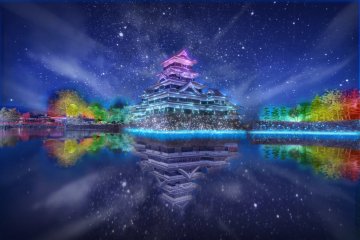
The Matsumoto Castle Illumination event preserves the castle structure by utilizing projection mapping technology in lieu of standard LED lights, and the reflection of the lights and the castle on the moat creates an ultra-photogenic scene.

The Matsumoto Castle Ice Sculpture Festival has been running for over 30 years now, with a variety of skillfully designed works on display from several competing teams.

A special winter event brings the beauty of digital art to Matsumoto Castle, with a variety of stunning projection mapping displays for visitors to enjoy.
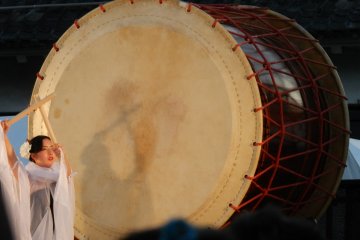
An introduction to the raw and elegant sound and fury of the Matsumoto Taiko Festival
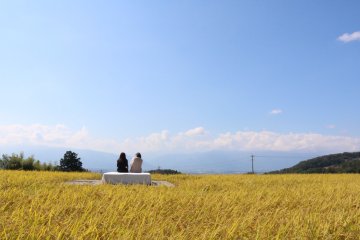
Take a break from your everyday routine with a healing retreat in Matsumoto, Nagano Prefecture. Here, cultural heritage, bountiful nature, and local charm coexist to create an environment where you can utterly relax and stimulate your mind in new ways.

Matsumoto Backpackers is a budget friendly hostel in the heart of Matsumoto with a traditional home feel.
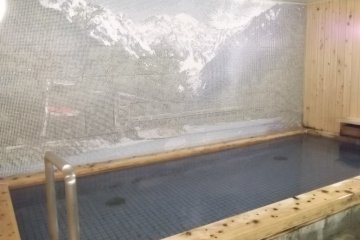
In Matsumoto in central Japan's Nagano prefecture, Hotel M is a conveniently located, inexpensive hotel, mainly with capsules but with some private rooms.

Laboratorio Cafe & Shop offers homemade English muffins and handcrafted goods just a few minutes walk from Matsumoto Castle in Gunma. Creativity, minimalism, and organic embody the essence of Laboratorio with their domestic made and organically grown menu and goods.

Matsumoto is Nagano Prefecture's second-largest city. If you're visiting as a vegetarian or vegan (or if you just love delicious plant-based cuisine), Healthy Penguin Cafe is a must-visit. The cafe is located just a short walk from the city's iconic castle.

In Matsumoto in Japan's Nagano prefecture, Bistro Kotsuna Seta offers excellent French-Japanese fusion cuisine at very affordable prices.
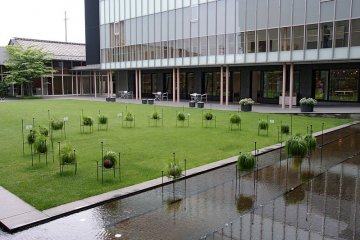
Appreciation, representation, learning and communication are the four" "fundamental themes" "of the Matsumoto City Art Museum (Matsumoto-shi Bijutsu-kan), which features works by the city's most famous daughter, Yayoi Kusama, as well as other local artists. Kusama was born in 1929 and is internationally known for her signature Pop Art works. The collection of the artist's works includes various paintings and sculptures created in her typically lively and colorful style. Outside the main entrance of the building you can also admire a large tulip sculpture of her, which was unveiled when the museum was founded in 2002. The works of other artists are shown in a separate section of the museum, which rotate throughout the year. The museum also houses a shop that sells various souvenirs and art-related goods.

Samples of crafts such as oshie dolls popular in Matsumoto city.

Matsumoto, located in the heart of Nagano Prefecture, is a destination that offers a rich blend of history, culture, and natural beauty. While often associated with nearby outdoor attractions like Kamikochi and the Japan Alps, the city itself is well worth exploring for several days. At the center of the city stands Matsumoto Castle, one of Japan’s few remaining original castles and a designated National Treasure. Completed in 1593, it is the oldest standing castle in Japan. Its striking black exterior gives it the nickname “Crow Castle,” and the surrounding park and moat provide stunning views year-round. The castle is especially beautiful during the cherry blossom and autumn foliage seasons. A few blocks south of the castle is Nawate Street, a charming shopping street known for its frog-themed statues and shops, including the iconic Kaeru Daimyojin (frog god). Just across the river lies Nakamachi Street, home to traditional storehouses (kura) that now host craft shops, cafes, and fruit stands. The apples from Matsumoto are particularly well known across Japan. For those interested in local culture and craftsmanship, the Matsumoto Folk Craft Museum offers a curated look at over 7,000 items from Japan and abroad, including wood, glass, porcelain, and bamboo works. Founded in 1962, the museum is nestled in a quiet area surrounded by forest and is accessible via the Utsukushigahara Line bus. Also of historical significance is the Former Kaichi School, one of Japan’s oldest elementary schools. Established in 1873 and registered as an Important Cultural Property, it was relocated and restored in 1964. Visitors can explore old classrooms, wooden desks, and educational exhibits. It can be accessed via the “Town Sneaker” bus to Takkajoumachi. A one-day bus pass is available for 500 yen and includes admission discounts. Matsumoto offers a wide range of attractions beyond its museums and shopping streets. The city is home to many hot springs and boasts a strong culinary scene featuring local dishes such as soba, sanzokuyaki (deep-fried chicken), and taiyaki, a sea bream-shaped sweet. Matsumoto is also a sake-producing region, with five breweries offering tours by reservation. Seasonal festivals add another layer to the city’s appeal. One of the most unique is the Ameichi (Candy Festival) held in January. For visitors seeking information, English brochures are available at tourist centers near the train station and castle. Whether as a gateway to the Japan Alps and Kamikochi or a standalone travel destination, Matsumoto offers a deeply rewarding experience rooted in tradition, craftsmanship, and natural beauty.